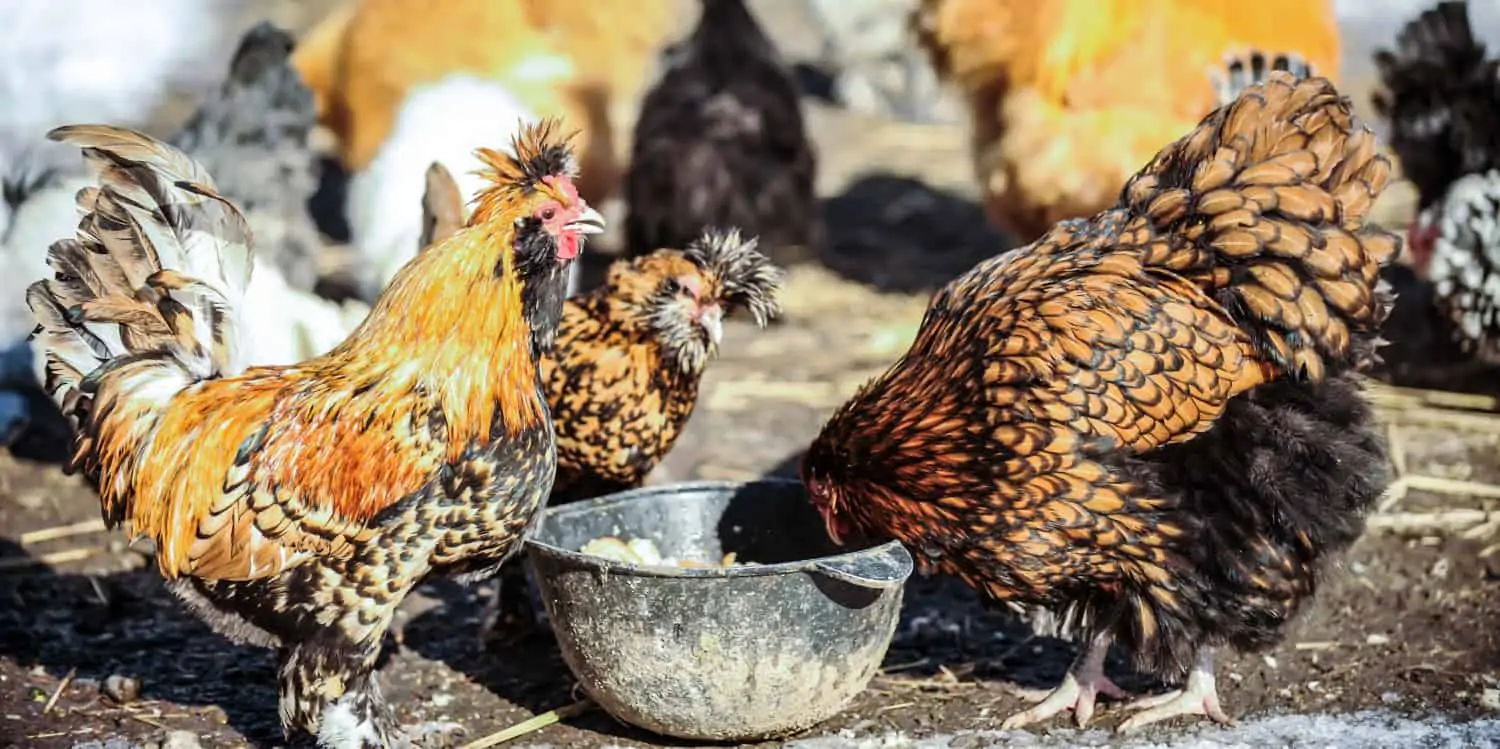When you think of a chicken, what comes to mind? Most likely, it’s a big white or brown egg-laying hen. But there are other types of chickens out there too. One of these is the bantam chicken. This small poultry can be found in many colors and breeds – but do they taste good, and are they worth breeding as meat birds?
You can eat a bantam chicken just as well as you can eat any other chicken. But due to their small size, they are usually not bred for meat. Many people find them too little for this purpose and prefer to raise larger chickens, like the Australorp or White Sussex.
In this article, we’ll discuss whether or not eating bantams is worth your time and effort. We will also talk about some benefits of raising bantams and whether they are harder to keep than regular chicken breeds.
Table of Contents
What is a Bantam Chicken?
Before we dive into the question of eating them, let’s take a moment to define what bantams are:
Bantam chickens are small chicken (or other poultry) breeds, usually weighing about 1 to 2½ pounds. There do exist “true” bantam breeds, but many bantam varieties are smaller versions of regular chicken breeds.
The growth gene in true bantams limits their body size to between a third and a fifth of a standard chicken. To create a miniature breed from standard-sized poultry, breeders have mated these chickens with true bantams.
The term “bantam” comes from the Indonesian city of Bantam (https://www.etymonline.com/word/bantam), from where they supposedly originated. European sailors restocking on live fowl for sea journeys found the small native breeds of chicken in Southeast Asia to be useful, and any such small poultry came to be known as a bantam.
Today, they are typically bred for the intention of show, rather than egg layers or for meat purposes. Bantam chickens come in many varieties, such as Brahma, Wyandotte, and Silkies, and they all lay delicious eggs. They come in many shapes and sizes.
Can You Eat Bantam Chickens?
While bantams are usually not kept for their meat, there can be good reasons to consider eating them. Perhaps you have been hatching chicks and now have a surplus of cockerels. Too many roosters together can be a real problem, and the quickest way to solve that is by harvesting them. Your only other option would be to sell or trade them, but roosters are not very sought after.
All bantams can be eaten and used in any recipe that calls for chicken. The only time you may not want to eat bantams (or any other poultry) is if they carry disease or have been treated with antibiotics, as this can make them unsafe for human consumption.
However, due to their small size, one chicken doesn’t offer much in terms of quantity. Less than 50% of a bantam’s bodyweight is meat, so you will probably need to serve more than one at family dinners.
Do Bantam Chickens Taste Good?
There is no difference in taste between a bantam and any other type of chicken. They can be just as tasty as other purebred chickens, which largely depends on the breed and how you cook them.
Are Bantams good for meat?
Maybe you want to breed bantams for their many other values, but you also want to eat them from time to time. In which case, I recommend you look for bantam varieties that are essentially small versions of standard meat breeds.
The Barred Rock bantam is a very popular small breed, with an average weight of 2 pounds. These fun and excited miniature birds are easy to care for while supplying a decent amount of very delicious protein. They also lay around 280 eggs each year, which makes them great dual-purpose chickens.
Barred Rock bantam chickens are a great option for anyone looking to enjoy their own home-raised meat without needing a lot of space.
A Case For Breeding Bantam Broilers
While Bantams may not be the most efficient option in the meat industry, they do offer some benefits that make them worth considering for someone raising their own meat birds.
Because of their small size, you can provide an entire chicken for each person at the dinner table, which some people will surely enjoy. If you have children, they will, without a doubt, appreciate the opportunity to eat a whole bird and not having to fight over the drumsticks.
Silkies (https://www.chickensandmore.com/silkie-chicken/), specifically, can be interesting meat birds because of their black skin and bones and dark meat. Some people will be put off by this, but others will find it to be a new and exciting experience. Silkie meat is lean but still very tasty. They are a delicacy in many Asian countries where they are very sought after.
That being said, I would not suggest raising bantams with the intention to eat them, as other birds will provide you with much more meat. But if you do keep them for their many other benefits, raising a few as meat birds is not a bad idea.
What Are Bantam Chickens Good For?
Although Bantams are not the preferred option for meat or egg production, they can make up for this with other qualities such as being very resilient and easy on the environment and your wallet in comparison to regular chickens due to low food requirements. They also require about half the water consumption compared to a regular chicken.
As Pets
Bantams are excellent pets, as they are very easy to handle and maintain. Their cute size is also an added bonus to many, and they are usually too small to scare children or adults who may not be comfortable with big chickens. Many schools and kindergartens prefer to keep bantams because they are easier to manage.
Great For Small Plots
Bantams also require less space, so you can easily keep them on a small allotment of land or in your backyard. Many bantam breeds are also less loud than regular chickens and produce fewer droppings.
Exhibition Birds
Bantams are often used for exhibition purposes, and they are much easier to transport than standard-sized chickens. If you dream of breeding exhibition birds but have a small yard and a small car, then bantams are a great choice.
Side Business Birds
Finally, bantams can provide a sizeable income from selling chicks and hatching eggs.
Many people prefer to keep the smaller breeds of chickens in their backyards, so there’s a high demand for these breeds. And because they don’t require much food or maintenance, you can bring home more money from breeding and selling bantams. Especially if you breed some of the more popular breeds, such as silkies, Cochin Bantams, and Sebright.
Are Bantam Chickens Hard to Raise?
Bantams are generally easy to raise and not much of a challenge to care for. They have the same basic needs as any other chicken, but they require less food, less space, and less cleaning.
Despite their small size, they are very tough animals with generally high resistance to disease and an ability to withstand cold weather. A bantam rooster is usually not very aggressive (and much less scary), which makes them a good choice for keeping around children.
The main concern with these tiny birds is that they are more vulnerable to predators. Not only hawks, raccoons, and foxes, but also smaller predators such as seagulls and rats, which are usually not a serious threat to regular-sized chickens.
Another thing to consider is that they are often more flighty and can get through small spaces more easily. So you will have to be more careful with the chicken run and make sure your garden fence can keep them in.
In Summary
Bantam chickens are great for small backyards, but they don’t have as much meat, and they are more susceptible to predators.
If you want a backyard chicken that is also easy to raise and with plenty of meat, then I recommend getting a regular-sized broiler chicken like the Cornish Cross (https://poultryparade.com/can-you-breed-cornish-cross-chickens-yourself/) or Buff Orpington.
However, if your yard isn’t big enough for those breeds, bantams may be right for you. They lay smaller (but just as delicious) eggs, and their size means they require less work and less feed.


